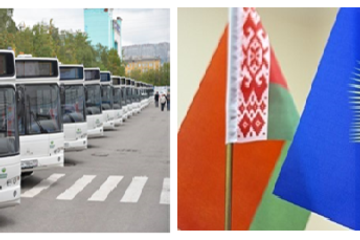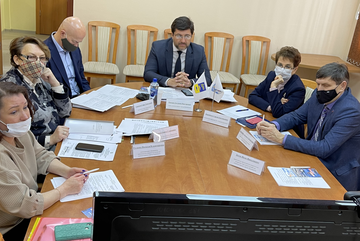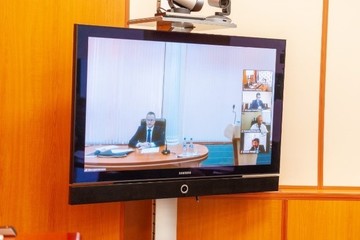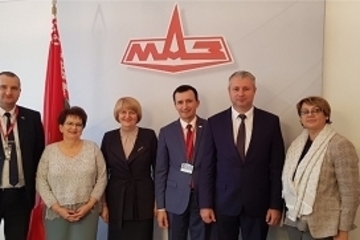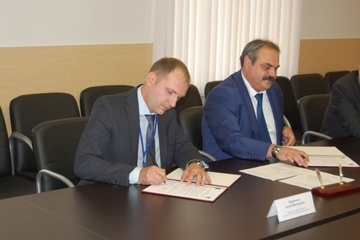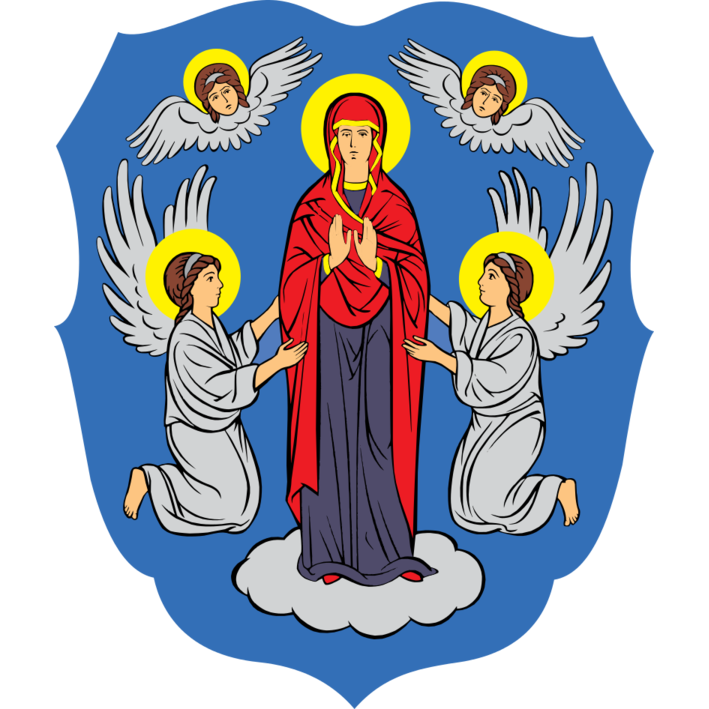
Minsk is the political, cultural and economic center of the Belarusian state, the seat of the president and government of the country. In addition, Minsk is the center of the oblast and district of the same name. The city itself is divided into 9 administrative districts. According to the 2000 census, the population was 1,680,000.
Time: Central European, + 2 hours GMT.
Minsk is located on the southeastern slope of the Minsk Upland, which is of moraine origin. It was formed during the Sozh glaciation, the last one to reach this territory.
The watershed of the basins of the Baltic and Black Seas passes near the city. The Svisloch River flows through Minsk, into which six more small rivers flow within the city limits. All of them belong to the Black Sea basin. The height above sea level within the city ranges from 184 to 280 meters, which, together with the two high-floodplain routes of the Svisloch River, results in a difficult terrain.
The climate is temperate continental, with a significant influence of the Atlantic sea air. Summers are warm, but not hot. The average daily temperature in July is + 18C. Winters are mild, with frequent thaws, the average daily temperature in January is -7C. However, in recent years, there has been a clear trend towards an increase in temperature in winter.
Distances from Minsk to European capitals
Warsaw (Poland) – 500 km
Vilnius (Lithuania) – 185 km
Kiev (Ukraine) – 565 km
Moscow (Russia) – 720 km
Riga (Latvia) – 470 km
Berlin (Germany) – 1050 km
London (England) – 2100 km
Paris (France) – 2150 km
History of the city of Minsk
The history of Minsk is a history of wars and destruction. This is the story of a city that, thanks to the will and hard work of its inhabitants, has risen many times from the ashes and ruins, like the mythical bird Phoenix. During its existence, Minsk was destroyed more than 10 times. The exact date of the foundation of the city is unknown, but it was first mentioned in the chronicles in 1067 in connection with the internecine wars of the Russian princes. This year Minsk was taken by storm and burned by the troops of the Kiev prince Izyaslav and his allies.
The original Old Russian name of the city is Menesk or Mensk. Its origin is unclear. There are several scientific and one legendary version on this score. According to legend, the name of the founder of the city was Menesk. Historians believe that the name of the city comes either from the small river Menka, on which Minsk was founded, or from the Slavic word "mena", "change". Since the city was located at the intersection of trade routes, where the exchange of goods took place. Later, in the 17th century, under the influence of the Polish language, the word Mensk was transformed into its modern form – Minsk.
Since the beginning of the XIV century, Minsk, as one of the cities of the Grand Duchy of Lithuania, is gradually turning into a major center of crafts and trade. In 1499, the city received the Magdeburg Law – the right of medieval cities to self-government. By the middle of the 16th century, guilds (corporations of medieval artisans) appeared in the city. The merchants of Minsk exported timber, resin, wax, iron, glass and leather products, and fur. They brought salt, wine, spices, fabrics, metals and products from them. Minsk had trade relations with many cities of Russia, the Baltic states, Eastern and Western Europe.
The city was badly damaged during the Russian-Polish war of 1654-1667. In 1793 Minsk became part of Russia, becoming the center of the Minsk province. It was again destroyed by French troops in 1812 during Napoleon"s invasion of Russia.
In the middle of the 19th century, the city began to develop as a major industrial and transport center. This is primarily due to the industrial revolution in Russia and the widespread construction of railways. By 1900 Minsk was connected to the center of Russia, Poland, the Baltic states and Ukraine by the Moscow-Brest and Libavo-Romenskaya railways. Two depots and workshops were built, a water supply (1874), a horse tram (1892), a power station (1894), telephone communication (1890) appeared. During this period, 58 factories operated in the city with a population of 91 thousand people.
During the First World War of 1914-1918, the 1917 revolution and the ensuing civil war, the power in Minsk changed several times: Soviet, German, Polish troops entered the city and left it. Since January 1, 1919, Minsk is the capital of the BSSR, since 1922 it has been part of the Soviet Union. Wars and foreign intervention have caused significant damage to the industrial and social infrastructure of the city. However, in subsequent years, a new impetus was given to the political, social and industrial development of the city. Minsk became the capital of one of the union republics, the center of the region and district. During the period between the two world wars, the population of Minsk almost doubled, and the volume of industrial production increased 40 times.
The formation of the BSSR provided opportunities for cultural development. In 1921, the Belarusian State University (BSU) and the first scientific library in Belarus were opened in the city. In 1928, the Academy of Sciences of the BSSR. In 1922, a state and university library was created at the university. At the moment it is the National Library – the largest book depository in the republic.
Rapid economic development required many competent specialists in various fields. Therefore, the number of secondary schools, universities, technical schools and libraries has increased in Minsk. In 1929, a tram started operating in the city; a little earlier, a bus service was established. The airport was built in 1934.
In the very first days of the Nazi invasion of the USSR in June 1941, Minsk was subjected to devastating German air raids. Despite the stubborn resistance of the Red Army, the city was captured on the sixth day of the war. During the three-year occupation in Minsk and its environs, the Germans killed more than 400 thousand people, and the city itself was turned into ruins and ashes. They destroyed 80% of residential buildings, almost all factories and plants, power plants, scientific institutions and theaters. Despite the terror of the invaders, a patriotic underground operated in the city.
Minsk was liberated by Soviet troops on July 3, 1944. Now this date is celebrated as the Independence Day of the Republic of Belarus. In 1974, to commemorate the merits of the city"s citizens in the fight against Nazism, Minsk was awarded the title of Hero City.
In the post-war years, Minsk was actually rebuilt, becoming one of the main centers of the Soviet Union, a center for mechanical engineering and high technologies with a developed culture, health care, education, transport and science. The products of his automobile and tractor plants have become a visiting card of the republic on the world market. In 1952, a trolleybus appeared in the city, in 1984 a subway, and in 1982 an International Airport was opened.
Since 1991 Minsk is the capital of the Republic of Belarus (Belarus). The Executive Committee of the Commonwealth of Independent States (CIS) is also located here.
The chairman of Minsk city executive committee is Vladimir Kukharev.
Official website of Minsk:
